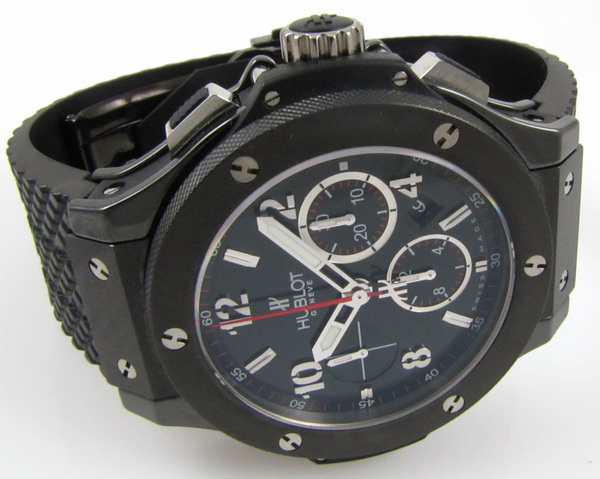A young brand by any standard, Hublot is indeed an infant among the centuries-old Swiss giants with which it competes…Yet within years of its founding in 1980 became known as the watch of European royalty. Few brands can claim such a speedy successful rise as Hublot, a feat made possible by the purity of vision belonging to Carlo Croco. The vision was indeed simple at first, he just wanted his own watch, to break away from his uncle’s watch company, the Italian firm Binda. What he ended up breaking away from were the traditions of luxury watchmaking, in the rubber strap. Hardly a watch enthusiast can be found today without at least one rubber strapped watch in their personal collection. They are standard equipment on sport watches and can be found in the collections of many of the centuries-old Swiss giants: Patek Philippe, Audemars Piguet, Blancpain and others.

Trouble came slowly for the Hublot brand, after surviving rashes of copycats by holding to the purity of the Hublot style, change seemed inimical to the company and popularity began to wane. There were small steps toward the evolution of the Hublot. In 1987 Croco allowed the watch to be made with a white dial and began bringing in mechanical movements to replace the ETA quartz that had been the soul of Hublot. Croco added two models to compliment the Hublot Classic; the Hublot Elegance with dial markers and no bezel screws and the Hublot Sport. The company seemed to have lost direction until it caught the attention of a man in search of a brand.
While Croco’s Hublot was capturing the wrists of royalty and the trendy, Jean Claude Biver was capturing the imagination of watch purists with his relaunch of Blancpain as an all-mechanical line. He describes himself at Blancpain as an extremist concentrating exclusively on the mechanical movement. This attitude so well described in marketing parlance — “Since 1735, there has never been a quartz Blancpain watch, and there never will be.” A series of personal tragedies in the late 1990s had left him in search of a brand. His analyses over the years of Swiss watch companies gave him a clear target: Hublot.
Months after approaching Croco, Biver found himself struck by the message of the original Hublot. The porthole form had originated in a purely functional manner: steel bound to the wood of a ship. Croco had replicated this in a luxurious, ornamental material and then paired it with rubber; a material foreign to the gold and to the origins of the form. Gold and rubber were only the medium. The message was a fusion of elements that would never ordinarily come together. None of the makeup of the original Hublot had ever been paired before both in form and material. Biver believed these unusual joinings could lead to a big bang. The goal of Hublot, under Biver’s leadership would be to join unusual materials and styles and then extend that fusion into the movement.

Biver has promised that the Hublot Classic line will not be touched, although an updated line called Tradition has been introduced. Biver’s plans to introduce his fusion concept into a movement will be revealed at Baselworld 2006. Tantalizing hints of new materials have been dropped in interviews, but Biver says the real revolution will be in the technology itself.
– Hublot Watches –